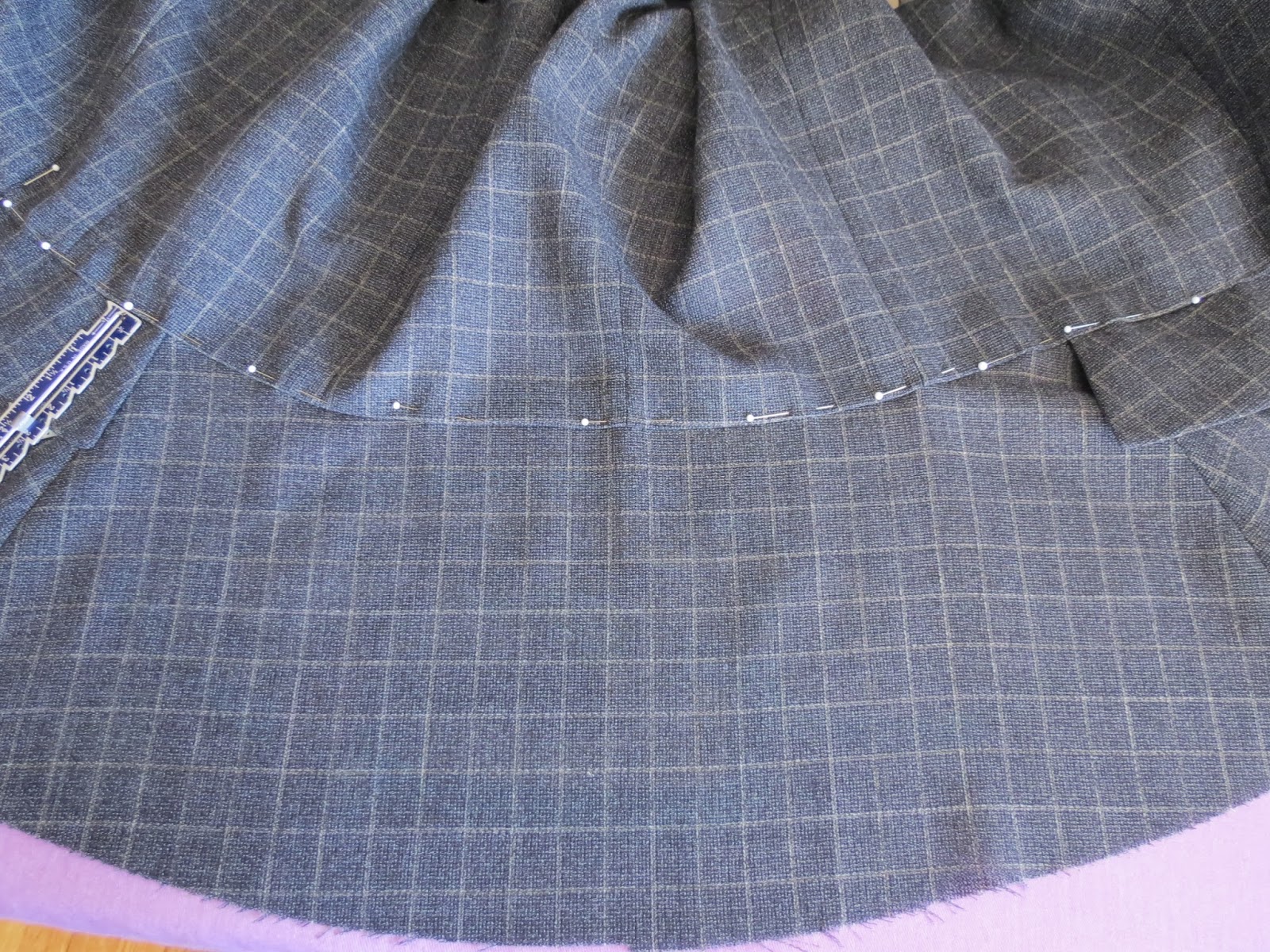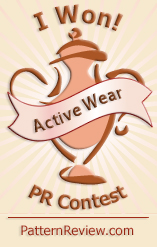And the skirt is underway and will be wearable pretty soon. But not yet, which is why I am modelling this with jeans.
 |
| Blouse and lining fabric |
I'm in search of a simple pattern, and might even use the top from Burda 7576. But I'm not sure about the high neck.
More details.
I made numerous fitting adjustments to this pattern based on what my muslin told me.
- To adjust for my narrow frame (which seems to be affected by my constant seated-at-the-computer posture i.e. my shoulders roll forward making my front narrower than my back), I took 7mm (.25") of width out of the front shoulder. I pinned the excess fabric out of the muslin and then slashed the pattern tissue in that area, overlapping it and slashing as needed. This sounds very sketchy, but it actually works.
- For the same reason I took a horizontal wedge out of the jacket front above the bust, reducing the length at CF but leaving the side length undisturbed. The wedge measures about 1cm (3/8") at CF. In sewing, I reduced the length in this area further by easing the front fabric to a fusible tape along the roll line (i.e. the tape was about 1cm shorter than the roll line).
- I lowered the bust dart by 2.5cm (1").
- Like other reviewers, I wanted 2 buttons instead of a single one. I adjusted the roll line and moved the under-lapel dart accordingly.
- You already know that I blunted the extreme corners of the collar and lapels. I brought the points in by 2cm (.75").
- I added width at the waist. This was a surprising fitting issue for me. This jacket has very little or possibly no ease built in at the waist.
- I flattened the curve of the back peplum to adjust for my flat seat. I took a 1cm wedge, i.e. reduced the hem length by a total of 2cm but leaving the waist seam the same length.
- I ditched the extreme cuffs on the sleeves. In sewing, I decided the sleeves were a little floppy so I narrowed the front sleeve seam by bringing in the curve approximately 1cm at the elbow level, bringing the new seam line back to the original location at the hem and armscye.
 |
| Lined to the hem |
- I lengthened the peplum by 2.5cm (1").
What else? In sewing, I did the following things not instructed by the pattern:
- I did not cut the side pieces on the bias. I couldn't see why the pattern called for this. The corresponding lining piece is identical but cut on the straight grain. I didn't want the visual distraction of the bias panel.
- I added a back shield as you have already seen.
- I interfaced the peplum and sleeve hems with my softer interfacing.
- I made a chest/shoulder shield from the pattern pieces, and a sleeve head, all cut from one layer of cotton quilt batting (this technique is illustrated here). I also installed shoulder pads.
- I cut the peplum lining the same length as the peplum pieces and lined the peplum to the edge with a normal seam allowance.
- The order of sewing the body lining was: First, construct the body pieces and peplum pieces separately. Second, sew the two together near the front edges, but leaving most of the seam open. Third, sew the lining to the facing in a continuous pass. Fourth, sew the lower edges of the jacket and facing/lining together. Fifth, sew the upper edge of the peplum lining to the waist seam allowance, making sure it all lies smoothly. Finally, attach the bodice lining at the waist by hand.
 |
| Peplum lining - in progress |
Everything, down to the buttons and thread, came from my extensive stash. The bemberg satin lining was left over from a dress I made quite a few years ago. I had enough for the jacket body and skirt. I cut the sleeve lining from striped bemberg, also in stash.
The buttons were purchased at (I think) Button Button in Vancouver many many many years ago.
That's about it. Stay tuned for the next piece.

























.jpg)




